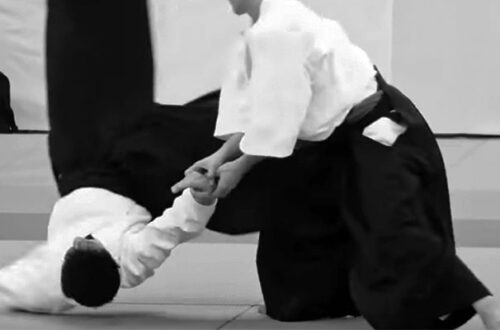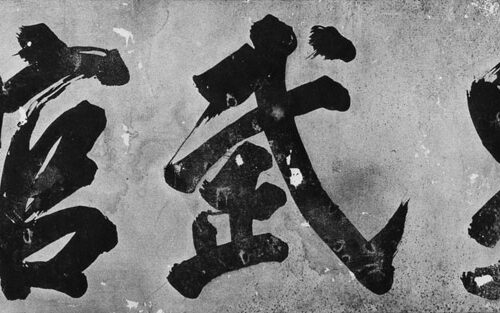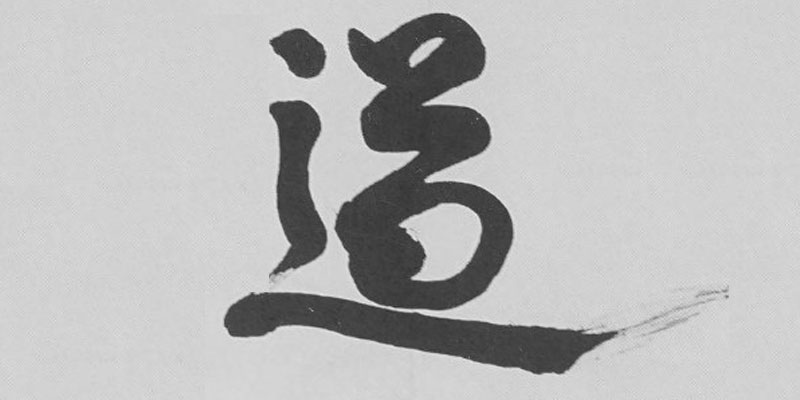
One Aikido, Many Expressions: Different Styles of a Living Art
Aikido, a modern Japanese martial art created by Morihei Ueshiba 植芝 盛平 (1883–1969), has grown into a worldwide discipline with numerous styles and interpretations. Though rooted in the same philosophical and technical foundation, the different styles of Aikido each carry their founder’s interpretation, emphasis, and training methodology. Here is an overview of some of the most influential Aikido styles and their defining characteristics.
Aikikai 合気会 – Aikikai is the original and largest Aikido organization founded by Morihei Ueshiba, carried on by his son Kisshomaru Ueshiba 植芝 吉祥丸 (1921–1999, Second Doshu) and grandson Moriteru Ueshiba 植芝 守央 (Third and current Doshu). It is considered the Honke 本家 style of Aikido and represents over 90% of the global Aikido population. The majority of Aikido schools can more or less trace their lineage back to Aikikai. In general, Aikikai style emphasizes flowing movements, large circular techniques, and blending with the opponent’s energy, heavily influenced by Second Doshu Kisshomaru and other senior instructors of that era in the Tokyo dojo.
Yoshinkan Aikido 養神館合気道 – Founded in 1955 by Gozo Shioda 塩田 剛三 (1915–1994). Yoshinkan developed a more structured and martial approach to Aikido. It is often referred to as the “hard” style. Yoshinkan emphasizes precise, pre-arranged movements and strong stances. Its standardized curriculum made it popular among police and military forces in Japan. Techniques focus on practical self-defense and are taught through rigid forms known as kihon dosa 基本動作 (basic movement).
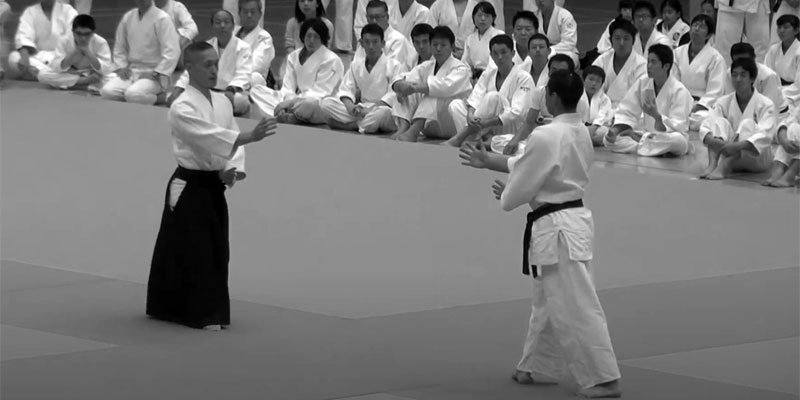
Yoshinkan Aikido emphasizes strong stances and practical self-defense
Ki Society / Shin Shin Toitsu Aikido 心身統一合気道 – Founded by Koichi Tohei 藤平 光一 (1920–2011), the first chief instructor of Aikikai and the only individual to receive the 10th dan from Ueshiba, recognized by Aikikai Hombu Dojo. Tohei left Aikikai to emphasize the internal aspects of training, especially ki development and mind-body coordination. This style focuses on “Ki” principles—extending Ki, relaxing completely, and maintaining balance of mind and body. It includes unique Ki tests, such as “unbendable arm” and “unraisable body”, and together with breathing exercises to build internal strength and harmony.
Iwama / Takemusu Aikido 岩間 / 武産合気道 – Founded by Morihiro Saito 斉藤 守弘 (1928–2002). Developed in Iwama, where Ueshiba spent his later years. This style emphasizes the integration of empty-hand techniques with weapons training. Known for its firm stance, clearly defined techniques, and detailed weapon work including aiki-ken and aiki-jo, Iwama style preserves the traditional forms as taught by Ueshiba in his final years.
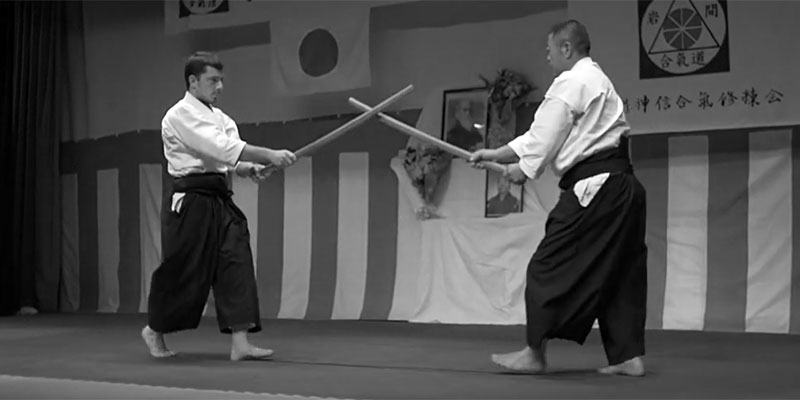
Iwama Aikido has a strong focus on weapons training
Shodokan Aikido 昭道館合気道 – Also commonly known as Tomiki Aikido, founded by Kenji Tomiki 富木 謙治 (1900–1979), a direct student of both Jigoro Kano 嘉納治五郎 (founder of Judo) and Morihei Ueshiba. Inspired by Judo, Tomiki sought to bring a sport-like aspect to Aikido. Shodokan Aikido is well known for its introduction of randori 乱取り (free sparring) and competitive format. It uses a structured curriculum with clear techniques, including tanto randori (knife defense sparring). It combines traditional forms with a scientific approach to martial movement.
Masseikan Aikido 万生館合気道 – Founded by Kanshu Sunadomari 砂泊 諴秀 (1923–2010). Sunadomari came from a family closely tied to Omoto-kyo, the spiritual movement that greatly influenced Ueshiba’s vision of Aikido. Masseikan emphasizes takemusu aiki 武産合気 and the spiritual essence of Aikido, including the integration of breath, intent, and compassion. Movements are smooth and expressive, often featuring large, flowing arcs with a focus on kokyu (breath) power. Sunadomari was known for powerful demonstrations of blending and effortless control. The phrase 合氣は愛なり “Aiki is love” is a guiding principle of Masseikan.
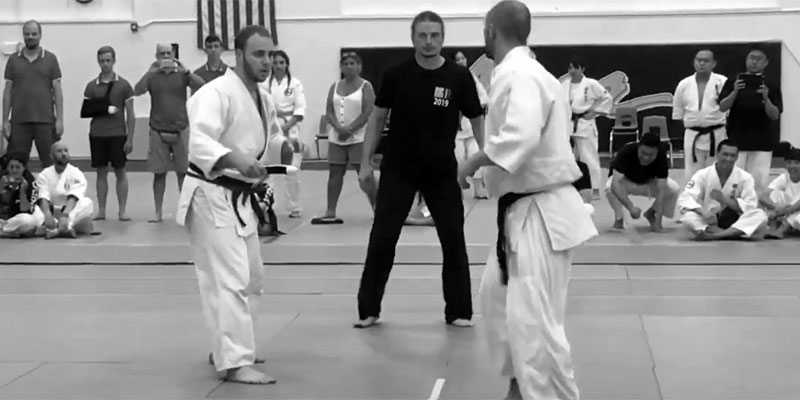
Tomiki Aikido brings a sport-like aspect to Aikido with randori
Tendoryu Aikido 天道流合気道 – Founded in 1969 by Kenji Shimizu 清水 健二, often known as the last uchi-deshi of Morihei Ueshiba. Tendoryu means “School of the Heavenly Way.” It emphasizes large, flowing, and relaxed movements that generate power through natural posture and minimal tension. The style focuses on freedom, softness, and intuitive response rather than rigid form or structure.
Founders of each of these styles were direct students of Morihei Ueshiba, and each reflects a different lens through which to view Aikido’s core philosophy—harmony, control without injury, and spiritual development. And from these styles, many other schools have emerged today. Whether you seek practical self-defense, meditative refinement, or structured discipline, Aikido offers a style to match each practitioner’s path.
Author’s Note: We appreciate your readership! This article serves as a preliminary introduction to the subject matter. While we aim for accuracy, we cannot guarantee the content’s precision and it may contain elements of speculation. We strongly advise you to pursue additional research if this topic piques your interest. Begin your AikidoDiscovery adventure! 🙂


